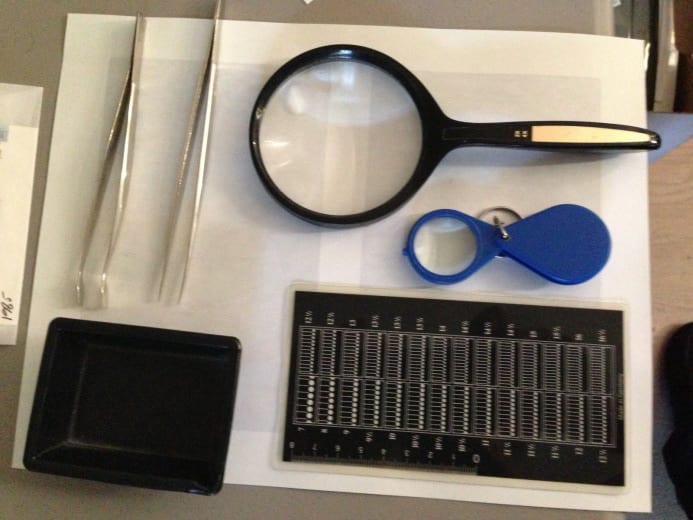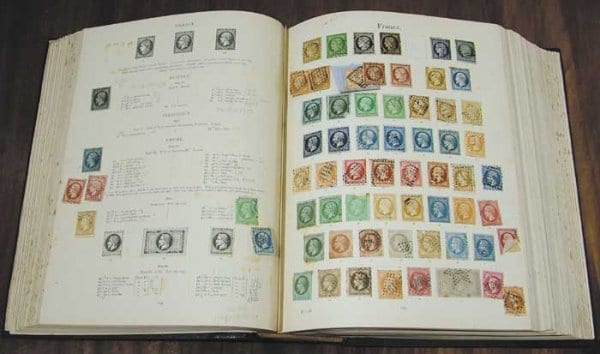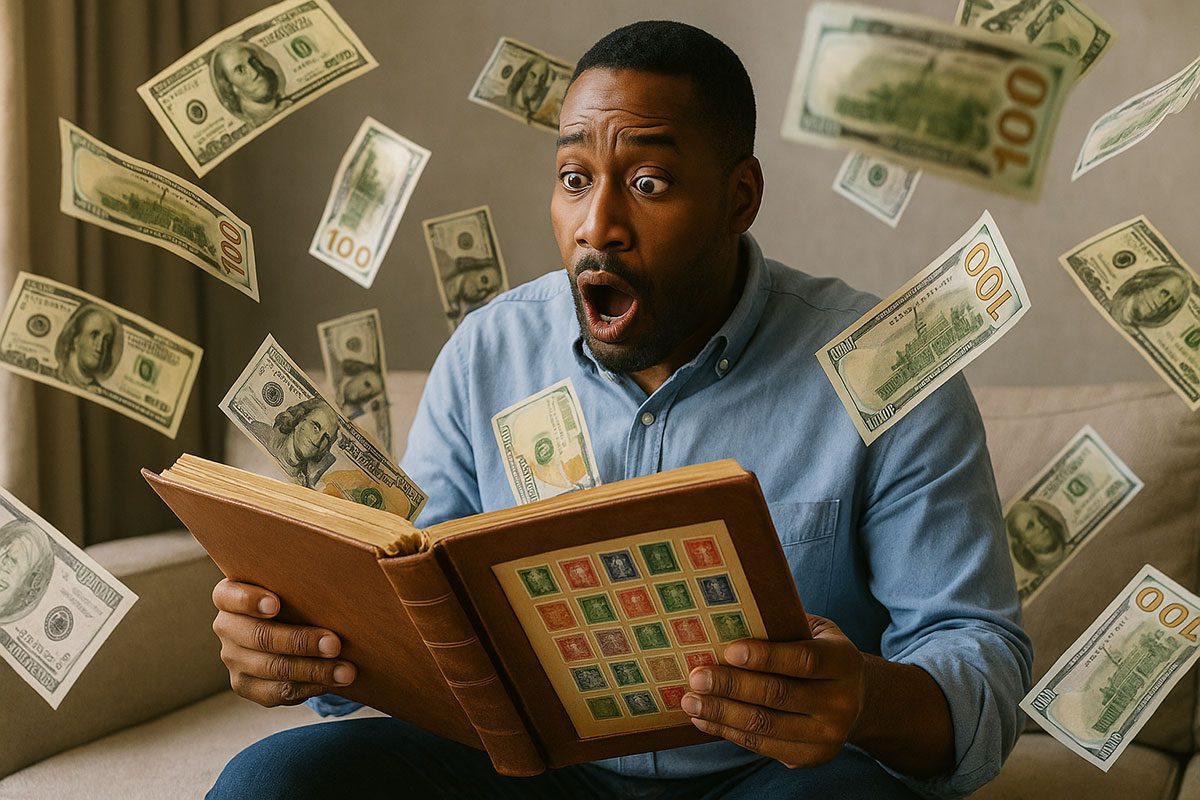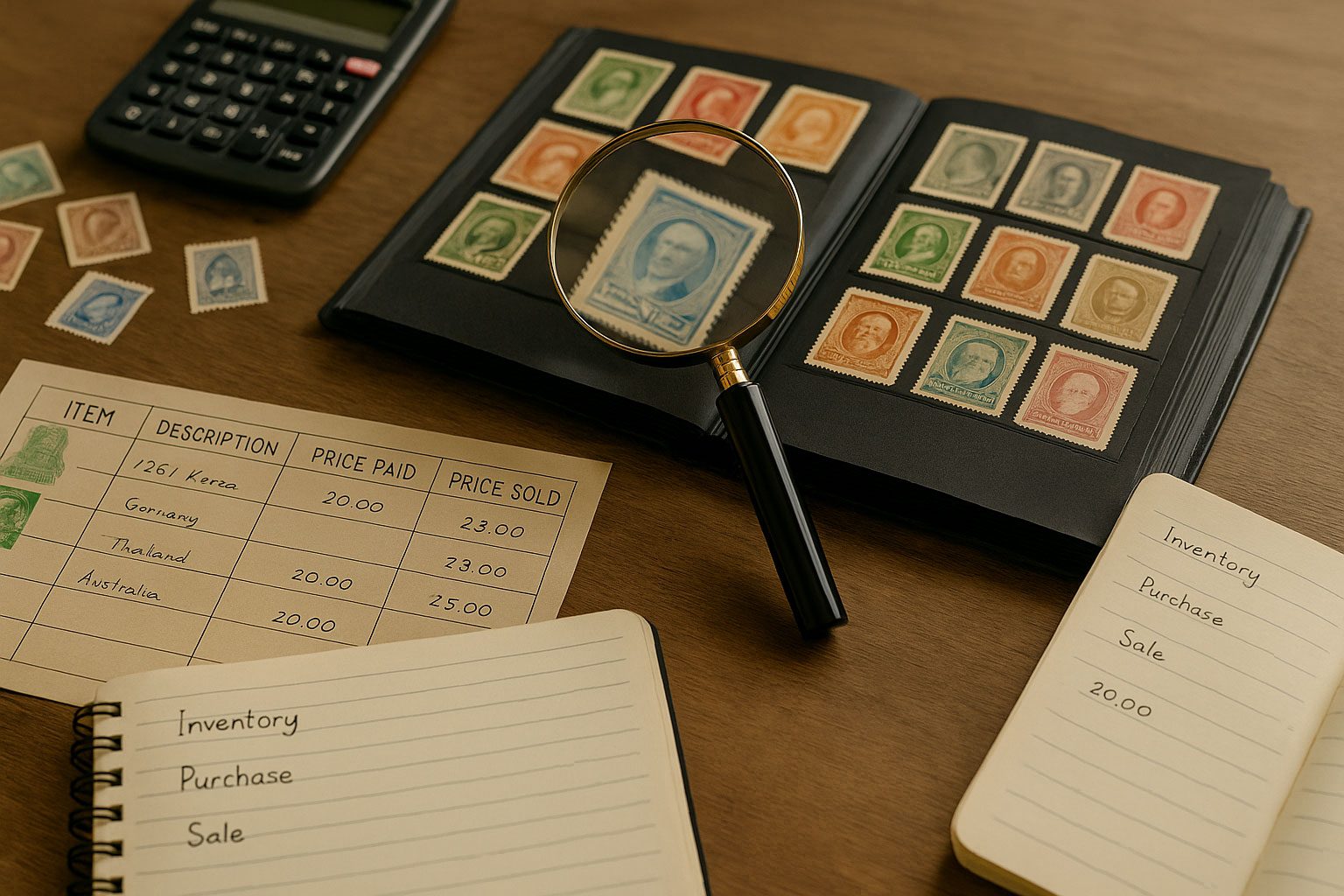So, you are thinking about stamp collecting? Be careful, you’ll most likely catch the stamp bug! Stamp collecting is great for the hobbyist and investor. It can be extremely addicting, and fun!
The great thing about stamp collecting is it combines art, history, and money! If you have an interest in any of those areas, then this could be the hobby for you. Or, if you have an interest in all of those areas, then you’ll most likely become a full-fledged stamp-a-holic.
Stamp Collecting How To
There’s no right or wrong way to collect stamps. However, there are some key things to keep in mind. Learning how to do stamp collecting can be both exciting and rewarding. In this Guide, we’ll show you how to get started.
Before we begin, it’s important to learn the difference between the different types of stamp collectors. Each one has different goals in mind for building their collection. Take a look at the 3 main types of collectors, and see which one suits your interest.
Types Of Stamp Collectors
The Hobbyist
Most stamp collectors are in it for the pure enjoyment of collecting. Sorting and organizing their stamps can be therapeutic and relaxing. There’s always excitement when one finds a treasure, or sells a piece for a nice profit. However, they don’t collect to make money or plan their retirement on it. They simply love the art, history, and value of a stamp.
The Investor
Most collectors who are in it for the money still get the same gratitude and enjoyment from stamp collecting as the hobbyist does. However they take it a step further. Most investors seek out “rare” and expensive stamps that have proven to become more valuable every year. The most desired stamps range from several hundred, to several thousand dollars – each!
Topical Collectors
Have you heard the saying for the iPhone, “There’s App For That”? When it comes to stamps, “There’s A Stamp For That”! Are you interested in sports? Perhaps you love poetry? Maybe you have an interest in specific dates, like the World War II era.
Whatever tickles your fancy, there are stamps about those topics from all over the world! Collectors who only collect a specific topic of stamps are called “Topical Collectors”.
What type of collector are you?
Stamp Collecting Terms You’ll Need To Know
Perforations
Perforations are the circular grooves on the side of a stamp. Different stamps have different sized perforations. They are measured in millimeters. Some stamps may be more valuable if they have a specific perforation size. Stamps with no perforations and straight edges around the entire stamp are called imperforated stamps.
Cancelations
Cancelations are the ink marks that are placed over a stamp when it’s used (often times it’s black, but not always). Some cancelations can bring a premium value to the stamp, but most stamps are worth less if they have been used. If a stamp has never been canceled, it’s known as “unused” or “mint”.
Condition
The condition of a stamp is everything to the novice collector. Whether or not it has its original gum and how centered the stamp is on the paper also play important roles in determining a stamp’s condition. Stamp centering ranges from Good, Fine (F), Very Fine (VF), Extra Fine (XF), to Superb.
Watermarks
Watermarks are hidden designs within the paper of the stamp. They typically cannot be seen with the naked eye, and require watermark fluid to reveal them. Therefore, finding watermarks can be fun, kind of like you are a forensics specialist on CSI.
Hinge
A hinge refers to a small piece of bent wax paper or tape that is used to mount your stamp to a stamp album. They can be applied by licking or wetting one side and applying one end to the stamp, and the other to the album page. Hinged stamps bring less value than those that have never been hinged (NH).
Catalog Value (CV)
The catalog value, or CV of a stamp refers to suggest market price for the stamp as listed in an official stamp catalog like Scott’s. You will rarely ever buy or sell a stamp for it’s CV, unless it’s completely flawless. CV is determined by past auction sales and expert opinion.

What You’ll Need To Get Started
- Stamp Album
- Hinges Or Mounts
- Stamp Tongs
- Perforation Gauge
- Watermark Fluid you can also use lighter fluid, although it’s not recommended for higher value stamps
- Price / Identifier Catalog Scott is the most widely used and accepted catalog
Where To Get Your Stamps
There are several ways of obtaining stamps. For starters, you can start by clipping out the ones you get in your mailbox at home or work. To remove them from the envelope, simply soak them in room-temp water for 30 minutes or so, or until they float off of the paper. Next, place the wet stamps between two pieces of paper towel and then place on a flat surface with a heavy book on top of it and allow to dry over night.
If you are looking to collect older stamps that aren’t in circulation, you can order from stamp catalogs like Linn’s. The best place to get great deals on mid-high valuable stamps is online. For example, auction websites like eBay typically sell at 10-20% of catalog value! A downside for dealers, but an upside for collectors.
You can also get great deals by joining a stamp club. Stamp club members are typically long-time collectors and better understand the market. They are often willing to sell their duplicates below what they purchased them for (depending on where the market is). Look online to find a stamp club near you and check them out!
Stamp shows and auctions are great places to find more “rare” and valuable stamps. The downside of stamp shows are that prices for general to mid-value stamps are usually inflated, compared to that of online auctions or stamp clubs. Check online for stamp shows near you.

How To Store Your Stamps
Once you have some stamps, it’s time to start organizing them. The most professional way is to invest in a stamp album. Stamp albums will show pictures of the stamps so you can place them in order of country and year issued. It also let’s you see the other stamps that are in the set, so you’ll know which ones you are missing.
Many amateur collectors will place their stamps in envelops or on stock pages. This is the ‘cheap’ and quick way to store stamps. However, it lacks the beauty of displaying your collection in an album. It’s also very unorganized and can be a pain to locate your stamps. After all, if you can’t easily enjoy looking at your stamps, then why collect them?
How To Sell A Stamp Collection
There may come a day when you wish to hang your hat on stamp collecting. Whether by choice, or by force. We here at West Coast Stamp Company have seen the gamut of reasons why someone may want to sell their collection. Regardless of the case, when the time comes, knowing your options will ensure you get the most for your stamps.
Stamp Auction Firms
In short, there are three main markets for liquidating a stamp collection. The first and most conservative method is to contact a stamp auction firm. They may decide to piece out your collection or offer it intact, depending on the quality and condition of your pieces.
The upside is that you’re almost guaranteed to get a fair market value your collection. The downside is the fees are pretty hefty. They typically take a 20% fee from the sale price. Plus the buyer of your collection is charged a 20% buyer fee. So in total, you may receive only 60% of the market value.
Stamp Dealers
The second method would be to sell to a reputable stamp dealer. At this point in your collecting journey, you should have a keen sense of the value of your collection. You’ll know what you paid for your stamps. While the stamp market goes up and down like all things, you won’t be walking blindly into the transaction.
Unless you are the “Investor” type collector we mentioned earlier, don’t expect to get back the full retail value you paid for your stamps. The person who sold you those stamps likely had a profit margin, and a stamp dealer will need one as well.
Keep in mind that stamp dealers need to make a living. Their profit margin pays for their time in finding the right buyer for your stamps, and the years it’s taken them to build a network of hungry stamp collectors.
Stamp Collectors
The third option you have would be to sell to a fellow stamp collector. They may be willing to pay you at cost, or more, depending on their needs and collecting goals. The downside is they may not want your entire collection.
You may be tasked with piecing it out over multiple collectors, should you even have enough of them in your contact list. While it sounds lucrative to come out ahead financially, depending on how you value your time, this method may not be feasible.
If you want to learn more, check out our guide How To Sell A Stamp Collection
Stamp Collecting Education
The most important thing you can do as a collector is to educate yourself. Many novice collectors get burned from bad buys. Not knowing the key differences between stamp varieties could mean the difference between making a big score, and getting duped. Like with any hobby, the more knowledgable you are at it, the better you’ll be able to build your collection.




Leave a Reply